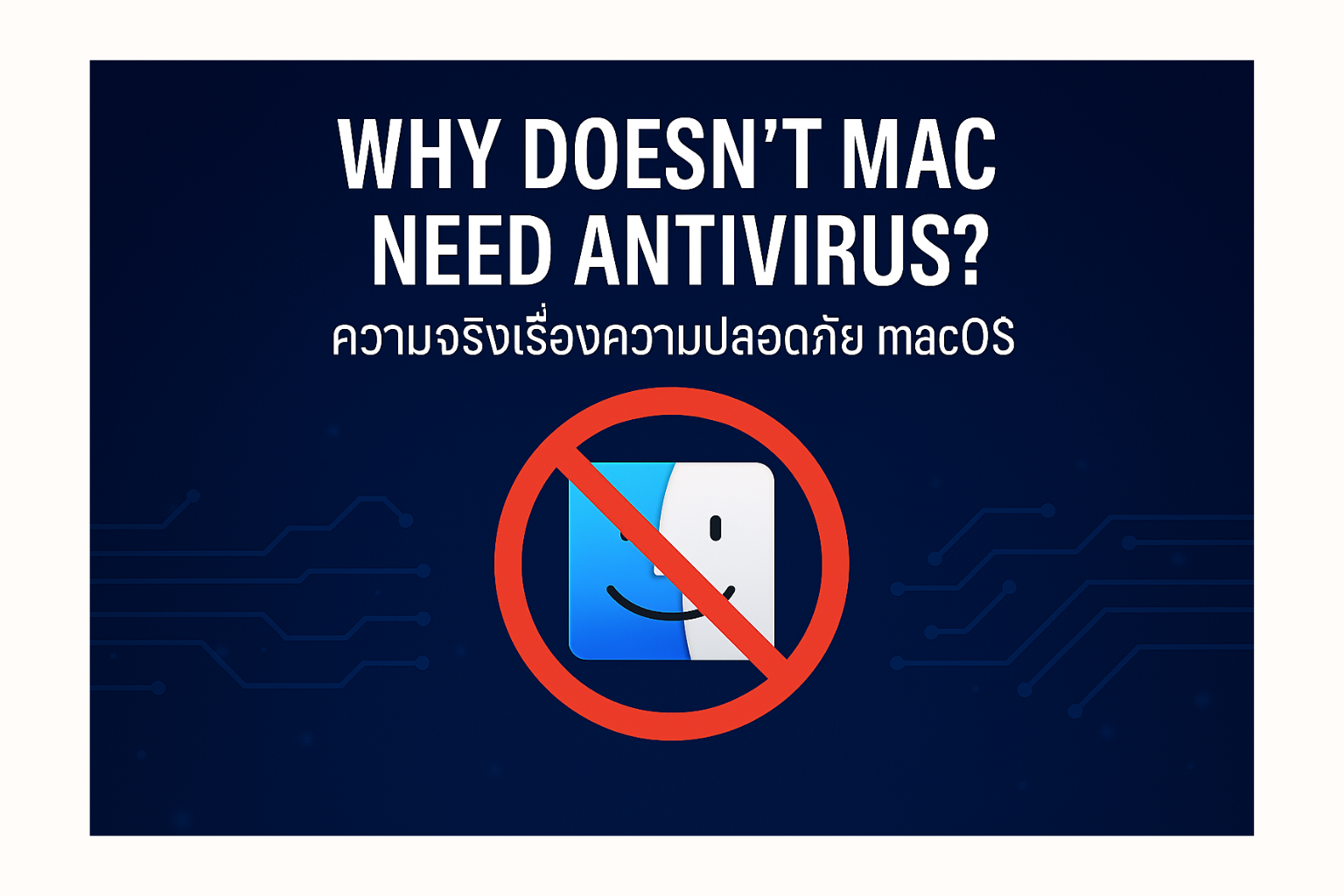Why Don't Macs Need Antivirus Like Windows? The Hidden Truth
The question "Why don't Macs need antivirus?" has been a popular debate in the tech world for a long time. Many Mac users barely consider installing antivirus software, while it's almost indispensable for Windows users. The truth is, there are several reasons why macOS has a more robust self-defense system, reducing the need for external antivirus programs.
Let's dive into the security mechanisms behind Macs.
1. Robust macOS Security Architecture
Apple designed macOS with security as a fundamental principle, incorporating multiple layers of built-in threat protection:
- Gatekeeper: This is a crucial feature that verifies all applications before you launch them. Gatekeeper checks if the app comes from an identified source (like the App Store or an identified developer) and if it's digitally signed. If an app fails these checks, macOS will block its launch or warn you, helping to prevent most malware that tries to infiltrate via untrusted applications.
- Sandbox: Applications on macOS run within their own "sandboxes." This means each app has limited access to your system resources and personal data. If an app is compromised, the embedded malware cannot easily spread to harm other parts of the system. Think of it like confining a prisoner to their own cell.
- XProtect: This is Apple's built-in antivirus that operates silently in the background. It maintains an updated database of malware definitions and scans downloaded or opened files for known malware. If detected, XProtect immediately blocks the file.
- System Integrity Protection (SIP): This feature prevents malware—or even users with administrator privileges—from directly modifying critical macOS system files and folders. This protects the core of the operating system from being altered or destroyed.
- Regular Software Updates: Apple frequently releases macOS updates, which include patches for any security vulnerabilities that may have been discovered. This keeps your system up-to-date and protected against new threats.
2. Smaller Market Share (Historically)
Historically, Macs held a significantly smaller share of the computer market compared to Windows. This made them less lucrative targets for cybercriminals to specifically develop viruses for Macs, as the return on investment from attacking fewer machines was lower. However, with Mac's growing market share, they are becoming increasingly attractive targets for malicious actors.
3. User Behavior
Most Mac users tend to be more security-conscious. They typically download apps primarily from the App Store or trusted developers and are generally more cautious about clicking unknown links or opening unfamiliar files. These habits significantly reduce the risk of malware infection.
So, Are Macs 100% Secure?
Absolutely not! No operating system is 100% secure. Macs are still vulnerable to certain types of threats, such as:
- Adware and Crapware: Unwanted programs that often come bundled with free software downloads or are deceptively installed without the user's full knowledge.
- Phishing Scams: Online scams that attempt to steal your personal information through fake websites or emails. This threat doesn't directly attack the operating system but targets the user.
- Ransomware: Malware that encrypts your data and demands a ransom. While less common on Macs, the risk exists.
- Zero-day Exploits: Unknown vulnerabilities that have not yet been patched. These are difficult to defend against, regardless of the operating system.
- Social Engineering: Tricking users into doing something unsafe themselves, like revealing personal information or downloading malicious files.
How to Keep Your Mac Even More Secure (Without Always Relying on Antivirus)
While macOS's built-in security features are excellent, adhering to good security practices can significantly bolster your protection:
- Always Update macOS and Applications: This is the most crucial step, as updates include security vulnerability patches.
- Download Apps from Trusted Sources: Primarily use the App Store, or download only from official websites of reputable developers.
- Beware of Phishing and Spam: Don't click on unknown links in emails, messages, or unfamiliar websites, and never provide your personal information without verifying the source.
- Use Strong Passwords and Enable 2FA (Two-Factor Authentication): Especially for your Apple ID and other online services.
- Back Up Your Data Regularly: Use Time Machine or cloud services to consistently back up your important data. In case of an unforeseen event, your data remains safe.
- Be Cautious with Browser Extensions: These can sometimes have vulnerabilities or hide malware.
- Consider Supplemental Antivirus (If Very Concerned): While not essential for most general users, if you frequently handle diverse file types or use your Mac in high-risk environments, installing a reputable supplemental antivirus (like Bitdefender, Sophos, Malwarebytes) can provide additional peace of mind. Just choose one specifically designed for Mac that doesn't consume excessive resources.
Summary, Macs have a very strong built-in security system that largely reduces the need for external antivirus software for most users. However, the best security always starts with the user. By staying aware and practicing safe digital habits, you can use your Mac with even greater confidence and peace of mind.

